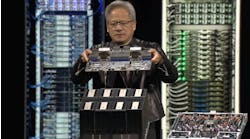Targeting the Digital Divide, Newby Ventures and Connected Nation Plan National Network of IXPs
Closing the Digital Divide requires infrastructure. A new initiative seeks to fill the gaps in America's broadband map through a network of Internet exchange points in smaller U.S. markets.
Interconnection specialist Newby Ventures is teaming with non-profit Connected Nation to build up to 125 Internet exchange points (IXPs) in regional markets, and hopes to fund the effort with government infrastructure grants.
"The local interconnection problem is yet to be solved," said Hunter Newby, CEO of Newby Ventures, and a pioneer in connected real estate. Newby was a co-founder of Telx and has been an investor and advisor to many interconnection firms, including Netrality, Colo Atl, NJFX, Fibre Centre, Allied Fiber and DataVerge.
Newby has an experienced partner in Connected Nation, which works to improve Americans' access to broadband through public-private partnerships.
"No community deserves a second-class internet experience,” said Tom Ferree, Chairman & CEO of Connected Nation (CN). "Over the next several years, states will work in collaboration with the federal government to spend $42.45 billion on improved internet infrastructure under the Broadband Equity, Access, and Deployment (BEAD) Grant Program.
"One factor confronting the efficacy of that program will be that many areas still lack a neutral venue for networks to interconnect and exchange traffic locally—a fact that results in high prices and sluggish internet performance," said Ferree. "Our JV aims to address that problem."
Extending the Network Effect
The IXPs will improve local Internet performance by reducing network latency, and improving access to cloud applications and content. Internet exchanges can also create new network paths into and out of each region, which Newby says is key to reducing the cost of backhaul connections to the core of the network. Having multiple connectivity options improves the economics of network ecosystems, as Newby has seen firsthand in building meet-me rooms.
These network intersections exist in major markets, but are less common in secondary markets. Research by Newby and Connected Nation found that 14 states have no carrier-neutral IXP facilities at all, putting them at a significant disadvantage. They identified 125 hub communities in 43 states and 4 U.S. territories where IXPs are needed, focusing on collaboration with public and private research universities to establish IXPs on their campuses.
This video from Connected Nation provides an overview of how IXPs work and why they matter:
The joint venture, known as Connected Nation Internet Exchange Points (CNIXP), hopes to fund its first five IXPs through a grant from the Enabling Middle-Mile Broadband Infrastructure program from the National Telecommunications and Information Administration (NTIA), which has $1 billion in funding to invest in programs to reduce the cost of bringing high-speed Internet to unserved and underserved communities.
In September, CNIXP applied for its first federal grant, and would use it to build new IXP facilities in Wichita, Kansas; Lexington, Kentucky; Starkville, Mississippi; Albuquerque, New Mexico; and Stillwater, Oklahoma.
Each facility will also serve as a competitive marketplace for wholesale internet (IP transit) and backhaul (transport), resulting in lower prices for both network operators and end-users. Ultimately, the JV will ensure that smaller cities and rural areas have the same opportunities to benefit from the continued evolution of the internet ecosystem as their metro counterparts.
Infrastructure Grants Provide Opportunity
CNIXP has larger ambitions, and has shared a list of the 125 cities where it hopes to build IXPs.
“If your community isn’t on our list, reach out to us,” said Brent Legg, Executive Vice President of Connected Nation. “We love working with local leaders who understand how important robust connectivity is to the economic and social vitality of their communities – leaders who want to be proactive in making the internet work better for everyone.”
For that larger network buildout, the JV hopes for funding from the Infrastructure Investment and Jobs Act, which provides up to $42 billion for broadband infrastructure deployment. In a recent analysis, The Pew Charitable Trusts noted that this funding "will bring the nation closer to closing the digital divide than ever before.
"This investment will touch nearly every aspect of the broadband space and will bring broadband access to more unserved and underserved communities than any previous effort, while also providing much-needed support for broadband adoption programs and community anchor institutions," Pew noted.
Newby and Connected Nation began working together on projects in Iowa, which formed the basis for the joint venture. Newby is overseeing facility design and relationships with carriers, cloud platforms and content delivery networks, while Connected Nation will take the lead on federal state, local government and university contacts.
CNIXP plans to use modular infrastructure to create a meet-me room with capacity for about 40 racks supporting 350 kW of IT load. Several universities are donating land for the project, with a footprint of about 2 acres.
"Since the design is modular, you could add modules at a location if there is additional market demand," said Newby. "Forty racks is a good starting point."
Are the Planets Aligning?
Newby has long been interested in addressing the digital divide. In 2010 he created Allied Fiber, which sought to create a national fiber network that could extend the core of the Internet to Middle America. The company used dark fiber and modular data centers in a bid to create Internet on-ramps in secondary markets. Allied Fiber built out a regional fiber network and 11 colocation facilities in the Southeast before hitting funding challenges.
The CNIXP initiative benefits from a changed landscape, as government infrastructure initiatives provide new ways to fund digital infrastructure for rural broadband, including Internet exchange points. Working with a non-profit provides alignment around the long-term goal.
"This is Connected Nation's mission," said Newby. "This is what they exist to do. I am trying to help them fulfill that mission."
Newby says that although CNIXP involves distributed digital infrastructure, it shouldn't be confused with the many edge computing plays.
"There's been a lot of hype and chatter in the edge computing space," he said. "I don't do edge computing. I stay away from the word edge.
"This is not new for me," Newby added. "Carrier-neutral real estate is key. I'm patient and I'm persistent. Someone has to provide the dirt and the buildings, and maybe the planets are aligning and the time is now. This is the new frontier."






